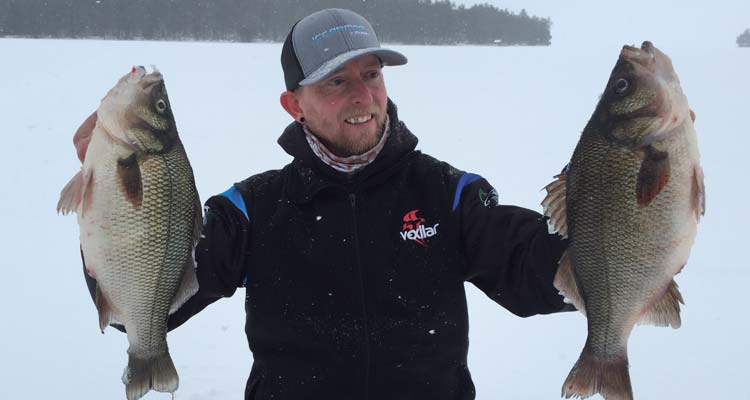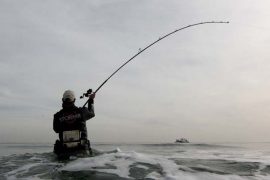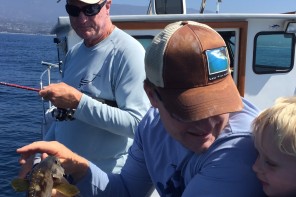
The striper’s smaller cousin blitzes under the ice all winter long.
White perch can be found in fresh waters throughout New England. Sebago Lake in Maine and Lake Champlain in Vermont both hold huge numbers of whites. New Hampshire’s Lake Winnipesaukee is well known for regularly producing white perch heavier than 3 pounds. The current Massachusetts state record, a 3-pound, 8-ounce beast, was caught in October 2016 in Wachusett Reservoir. White perch not only seem to be increasing in size, but also in popularity due to their size, strength, and flavor.
Despite their name and appearance, white perch aren’t perch at all. They are members of the temperate bass family, just like the striped bass. White perch are brackish-water fish that first migrated into the Great Lakes during the construction of the Erie Canal. They are considered invasive in some parts of the United States because they are prolific breeders and prey heavily on white bass and walleye eggs. White perch travel in large schools and feed aggressively during the winter, making them a prime target for ice-fishermen looking for fast action with hard-fighting fish.

Finding Winter Whites
White perch are typically easier to find in smaller ponds because they feed on plankton and small baitfish, both of which congregate over basins during the winter.
Larger lakes are more challenging due to the amount of real estate and the nomadic lifestyle of the white perch. While the fish sometimes take up residence in certain areas, they will move if the weather, fishing pressure, or baitfish patterns change. The key to finding white perch in large water bodies is to figure out what they are feeding on and where that food will be. If you find the food, you will almost certainly find the white perch.

Target basins, inside turns, and along steep breaks that lead to inside turns. Start in 30 feet of water and work shallower until you find fish. In smaller ponds, the basins might only be 15 feet deep. In that case, start in the deepest area and work your way into shallower water until you find them. Expect the fish to be suspended, but that isn’t always the rule.
White perch will try to trap bait in the basin and gorge themselves. When they succeed, they will stay there for hours, providing consistent, often furious action. When the bite slows, all you need to do is wait a few minutes for the school to cycle back around, but don’t wait too long. These schools are constantly on the move, so if the bite dies off for more than fifteen minutes, make a move to another area, such as another basin or inside turn.
The perch will also use inside turns to their advantage. The entire school will work together to corral baitfish and push them into the turns, much in the same way striped bass do. Once the perch have a school of bait in a tight ball, they will go into a feeding frenzy, which often attracts other fish, such as lake trout. If they can, the perch will reorganize and repeat the process until the bait moves on.
If you can find fish in an area where a steep break starts as a point and leads to an inside turn, you might be in for some of the best white perch fishing there is, especially during the last hour of daylight when whites feed most aggressively. The perch will push bait toward the break, which forces the baitfish to filter out to the safety of shallow water at the inside turn.
Lake maps, such as the Navionics Boating App, will help you locate key underwater structures such as breaks, basins, and inside turns. You can also mark waypoints and track fish movement. You will learn a lot about what areas white perch are frequenting. Make use of digital lake map technology and you will catch more fish.
The Changing Bite
White perch feeding patterns change throughout winter. First, ice is fun because oxygen levels are high, whites feed regularly, and less chasing is necessary as the schools move through the basins. During midwinter, decreased oxygen and colder water will cause white perch to become sluggish and to feed less aggressively. You will go from catching 25…





